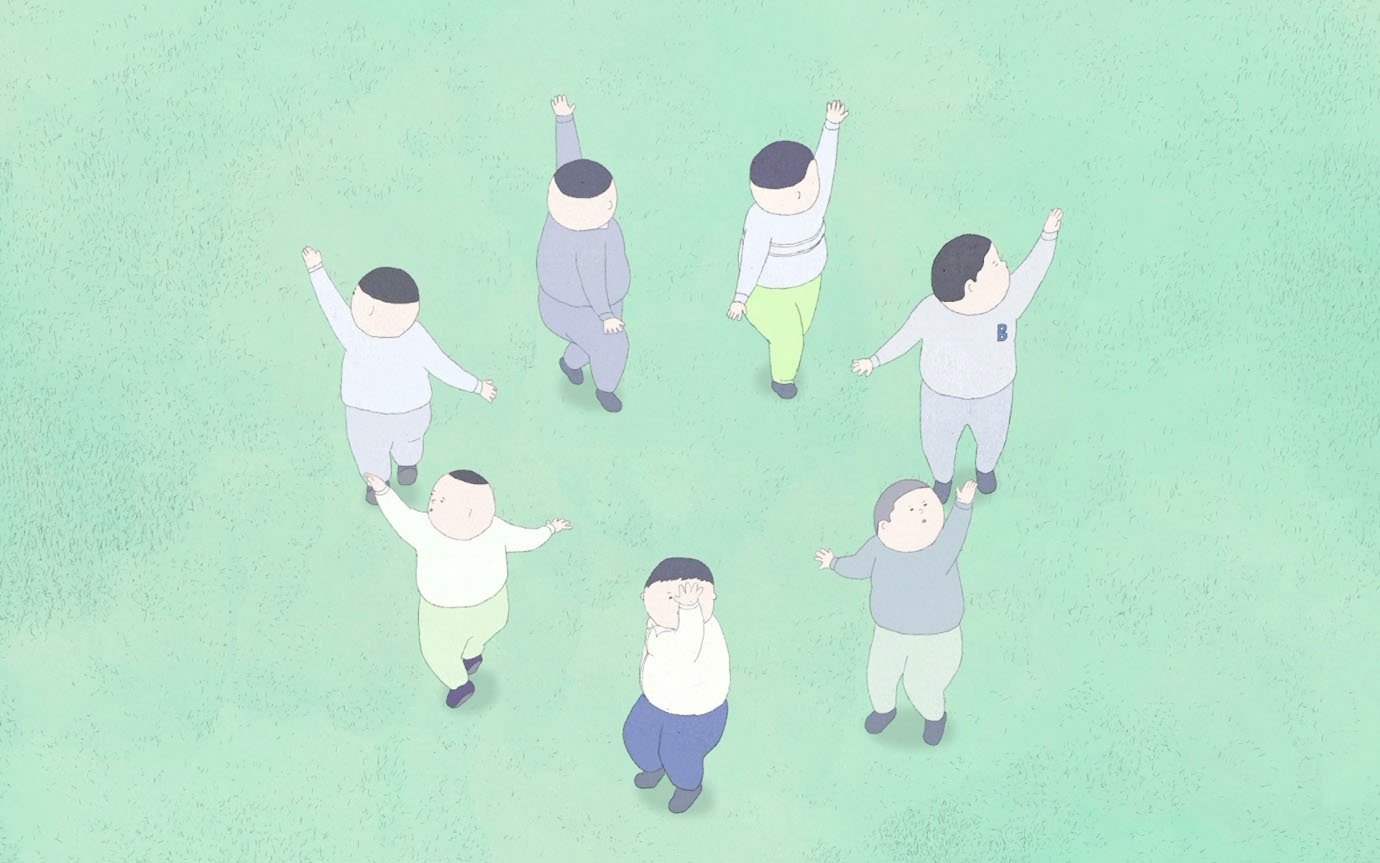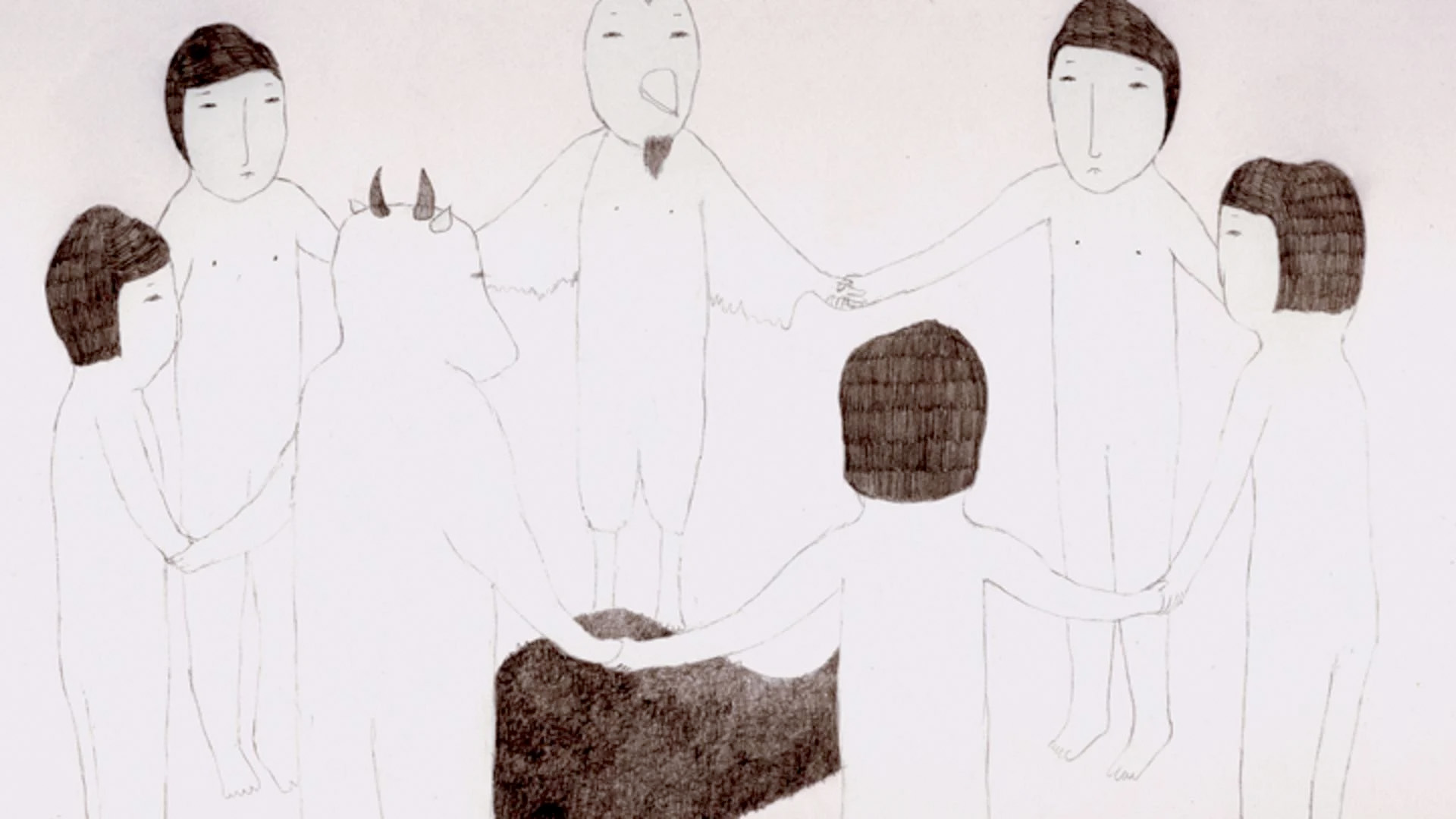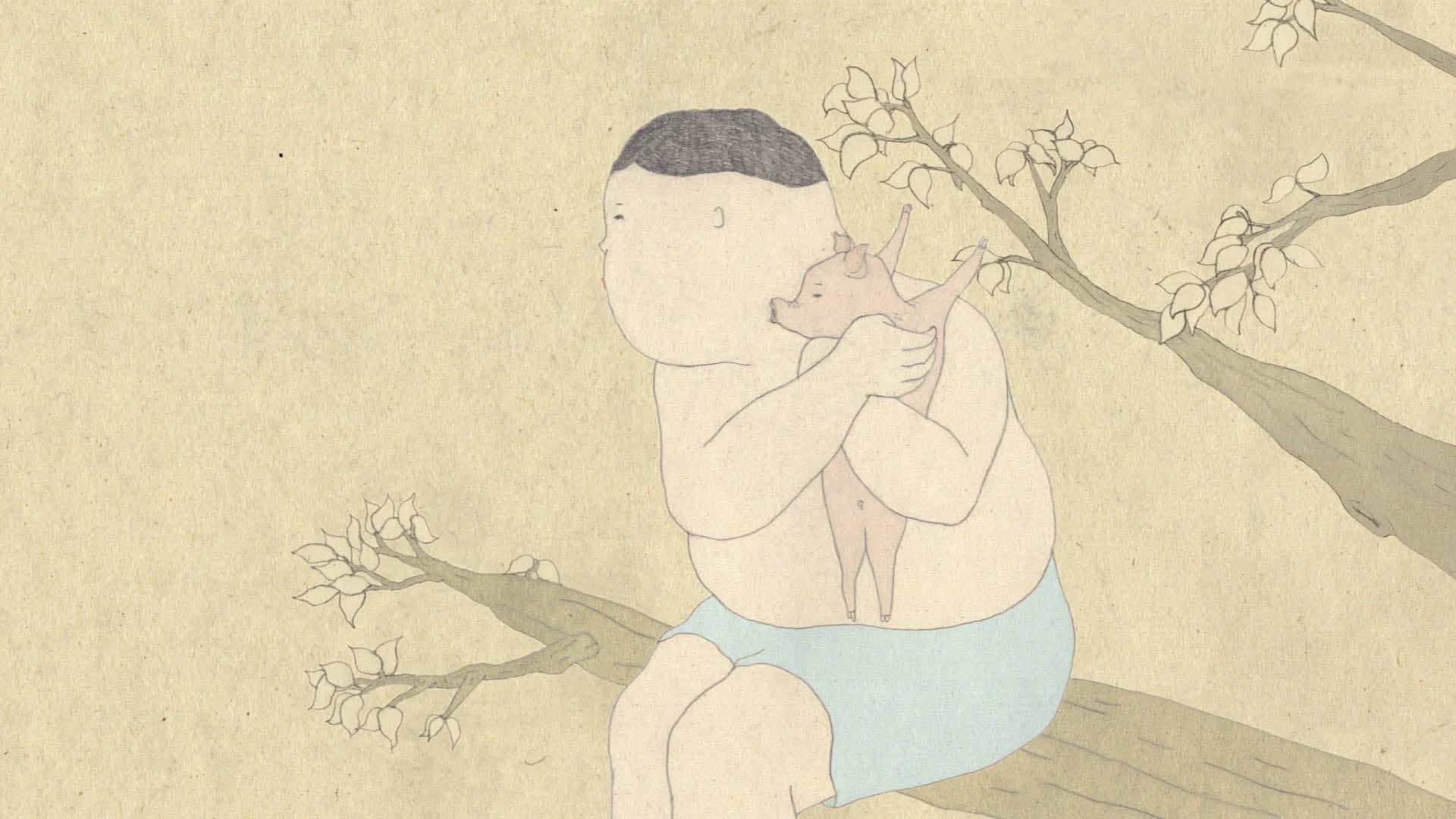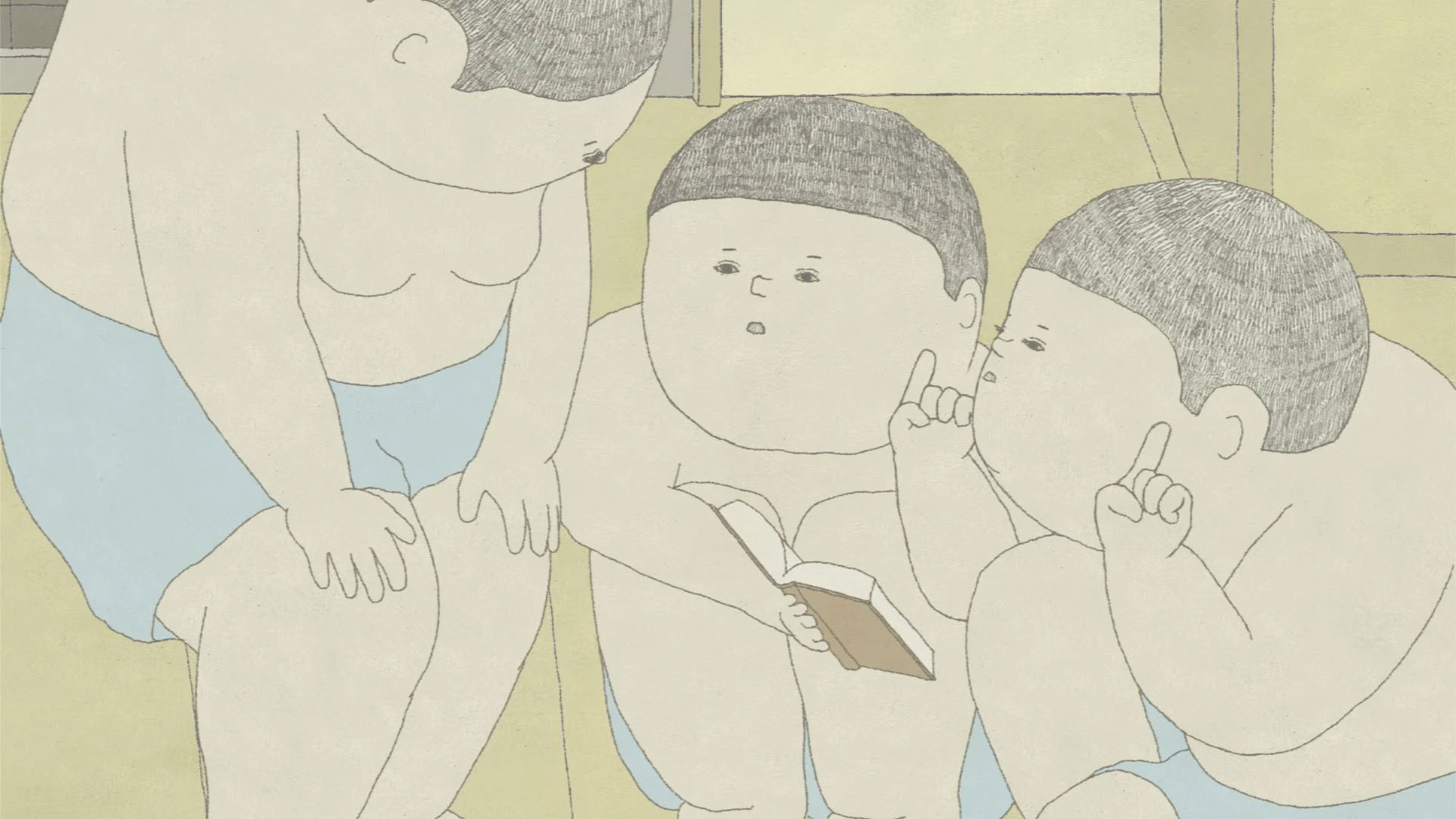Atsushi Wada: The Quiet Master
On The Japanese Artist’s Singular Work
First encountering Atsushi Wada’s animations can be a transformative experience. With his latest film, Bird in Peninsula, it’s our hope that new audiences are exposed to this unique figure of contemporary animation.

Nestled away in my university’s video library, “Japanese Independent Animators: Volume 3” introduced Atsushi Wada’s distinctive, singular, and idiosyncratic work. Films like Day of Nose (2005) and A Clerk in Charge (2004) were unlike anything I’d been exposed to in my animation course. His work felt especially significant when compared with the environment on campus. Among many students, a culture had emerged of making work that followed narrative filmmaking’s strict principles.
Wada’s films do not follow these rules. His animations move at their own pace, going off on strange tangents, following whatever sparks his curiosity. His characters have no heroic goals or obstacles to overcome. Instead, the people who occupy his films, mostly “office workers in suits or fat kids” (Wada’s own words)11 Quoted in a supplementary booklet that’s included with the beforementioned DVD. ↩︎, seem to live in some daydream. They move together in synchronised dances, talk in hushed whispers, and live alongside a troupe of exotic animals that curiously observe them.
His work suggested something exciting to me as a young filmmaker. His films proved that animation’s potential lay beyond the strict dogmas of narrative and structure and could allow filmmakers to craft a small world of their own. I haven’t left Wada’s world since seeing his short films. For me, a new project from this filmmaker is always a welcome treat, and a ticket to re-enter his strangely comforting vision.
Spanning the animator’s filmography from 2002-2010, the DVD from which I discovered Wada’s films remains the only physical release of his work. It’s frustratingly hard to track down, often sold second-hand at extortionately high prices. It points towards an upsetting trend among animation auteurs: bodies of work that are as hidden and inaccessible as they are wondrous and celebrated. Yet within experimental animation’s modest culture, Wada is considered a major figure, cited as an inspiration by many filmmakers of the medium’s new generation. Most recently, Sarina Nihei, the trailblazing director of Small People with Hats, announced her admiration for the director while delivering a masterclass for the London Animation Festival—a touching moment, not least because Nihei was sharing the bill with Wada himself.
Despite his underground status, the filmmaker’s work, now spanning more than twenty short films, has shown promising signs of finding greater recognition. From winning the Silver Bear at the Berlin Film Festival, to the litany of festival selections for his last two films, it’s an impressive list of achievements for a director who has committed so steadfastly to his surreal approach to animation.
Atsushi’s World
Atsushi Wada, born in 1980 in Hyōgo, Japan, started making short animations around 2002. Over three years, he produced seven films during a fruitful period of experimentation. His early work is unpolished but endearing, a fascinating document of an artist wrestling with their chosen medium. In his 2002 short Be Vague, which follows a teacher walking back from work, Wada’s drawings feel like strange doodles found in a school workbook. The rough, inky texture of the characters is at odds with his recent film’s soft line drawings.

Day of Nose
While the film’s animation is simplistic, the short’s atmosphere already suggests the unique qualities of his later work. The film’s pace is slow, thoughtful, and dream-like. The teacher’s thoughts appear on screen via title cards, seemingly plucked from the silent film era. “I was walking on a road I neither like nor dislike,” the teacher says thoughtfully, “I soon found myself in a vague space between dream and reality.”
Titles like This Mayonnaise is too Liquid display early signs of Wada’s off-beat humour. Yet they feel more serious in tone than the films which follow them. These are films occupied by characters lost in daydreams, alienated from the quiet dreariness of their lives. Despite the character’s strange visions and hallucinations, like the dark, hovering blob in 2002’s A Whistle, their world feels tethered to our own. Surreal, yet somehow like the reality within which we live. As his work progresses, Wada’s films move further from any familiar world, travelling into a place that feels internal, personal, and completely his own.
Regarded as his break-out film, Day of Nose (2005), displays all the elements and themes that would define his work in the future. Moving away from any loyalty to narrative or plot, the director began structuring his work around characters that move in precise and repetitive motions. “I began to think what ‘comfortable movement’ means to me,” Wada explains in his DVD’s supplementary notes, “in other words, I began to place emphasis on my personal feelings.”
In the film, a group of spectacled boys sit in a line of chairs, moving from seat-to-seat in rehearsed, mechanical movements. Once a boy reaches the end of the queue, his nose is squished by a strange man in glasses, and he runs off. As the next boy moves onto the now-empty seat, the cycle is repeated once again. The film substitutes a plot with the gradual revealing of an intricate spectacle, where each character’s movements directly affect the actions of the next. “I have been attracted to how people in rituals do the same movement together,” explains Wada, “[acting] in accordance with the decided manners and customs. They don’t have doubts about their actions.”
Day of Nose seems unafraid to stretch out its ideas, repeating the use of certain shots to create a circular feeling, returning to the same images and movements. With its ten-minute runtime, Day of Nose saw the filmmaker working in a longer format, using this freedom to create a more prolonged, unhurried approach to editing. It’s a viewing experience that requires the audience’s patience—perhaps the meditative pace makes his work a testing prospect for those familiar with narrative animation. That said, it never seems that Wada’s intentions are to alienate and upset, unlike some of arthouse cinema’s more provocative figures.
Alongside the film’s delicate, hand-drawn style, the unique soundtrack has a pleasingly intimate quality. Without music or dialogue, Wada’s use of hushed sounds creates an immersive environment. The experience of listening to his work echoes the recent craze of ASMR videos. Using stimulating sounds, like rustling leaves or constant rainfall, these videos attempt to trigger a tingling sensation in their viewers—ASMR being an acronym for Autonomous Sensory Meridian Response. Although one can’t speak for the scientific effects of Atsushi Wada’s films, it’s clear that his soundtracks are designed to elicit a strong response from viewers, somehow bringing them closer to the physical sensations of his characters.
This focus on minimal, quiet sound continues for most of his filmography, with only his latest works breaking his self-imposed rules. For instance, 2017’s Autumn is possibly his first film with a musical soundtrack, an excerpt from Vivaldi’s “Four Seasons”. The film goes further than simply introducing music to Wada’s animation, doing-away with sound effects altogether. The result is a fascinating experiment, which feels reminiscent of orchestral music from studio-era animation, like Hanna Barbera or Looney Tunes, filtered through Wada’s art-house sensibilities. Similarly, the filmmaker’s usual avoidance of recorded dialogue is surprisingly absent in his latest offering, Bird in the Peninsula, in which an animated goose delivers a monologue in Spanish.

In a Pig’s Eye
Animals in Empty Space
While his films are minimal, Wada seems to enjoy adapting the stylistic rules he sets for his work. One such change can be seen in In a Pig’s Eye, his 2010 graduate film from the Tokyo School of the Arts, where his previous refusal to use bright colours begins to loosen. “My previous films tried to cut down [as much] background and colour as possible,” the director explained, “but for certain reasons, including storyline, I decided to incorporate them in this film.” Still, his use of colour remains sparing. The film’s most extreme shades, red and pink, are employed only in key instances. Such moments include a boy applying bright lipstick to his face, or the boy’s father slicing a pink chunk of ham.
The film follows a family who live harmoniously with a huge pig that sleeps outside their home. The family’s six boys play happily with the gigantic creature, while their parents bicker and argue inside the house. Although the children look like characters in his previous films (pale, chubby, with a head of thick, black hair), Wada denies the connection between his different works. “Are the half-naked boys in A Pig’s Eye and those in The Mechanism of Spring (2010), the same? No. Never.” He is quoted as saying, adding playfully, “The boys in A Pig’s Eye are sextuplets, and the boys here are triplets.”
Alongside a shift in his use of colour, the film signals Wada’s growing fascination with animals and the natural world. In his work, animals and humans live in ambivalent peace, inspecting each other with tenderness and curiosity. In The Mechanism of Spring, three boys with magnifying glasses watch a variety of creatures. Two years later, in The Great Rabbit (2012), this dynamic is switched, as the human characters are carefully observed by the god-like creature of the film’s title. Somewhere between these two models is the amenable goose featured in Bird in the Peninsula, which leads one of the characters on a wild chase through the woods, before allowing them to hang onto his long neck as he flies them into the air.
Wada’s fascination with the world’s creatures is linked to his interest in changing seasons. Found in the titles of two films (Autumn and The Mechanisms of Spring), these changing states shift how Wada’s characters interact with their physical surroundings. In Autumn, a pile of brown leaves acts as a playful environment for the film’s woodland creatures. In Spring, the new season provokes a flurry of energy, from the excited movements of a herd of deer to the coital activities of two frogs. Wada emphasises his focus on physical sensation, saying “The film [The Mechanism of Spring] is an expression of the itchy feelings that everyone experiences when Spring comes.” 22 Ibid ↩︎

Anomalies
One of the most discussed aspects of Wada’s work is his commitment to “Ma”, a concept specific to Japanese culture, concerning negative space. Ma’s focus on prioritising and celebrating an image’s empty spaces, gaps, or absences feels linked to how Wada composes his film; his characters are often framed against minimal, empty backgrounds. Yet the filmmaker’s relationship to Ma feels more complex than it first appears. Wada has touched on the topic in many interviews, revealing each time a new way the concept informs his work.
“When I try to explain the meaning of Ma, I always have difficulties,” the filmmaker admitted in an interview: “I’ll give an example: the composer Tōru Takemitsu has talked about the use of ‘ma’ in music. It’s not just about silence, but that silence only becomes possible because there is sound. Takemitsu said that because of this, one has to think about both sound and the absence of it together. I feel the same way. If one applies this to animation, it is because there is a movement that there is also the absence of movement. I do not only mean movement and the space and time between movements, but that it is necessary to have movement in silence. Both need to be included in the concept of ‘ma’. It is important to think about how an animated movement affects the silence that follows it, and how that connects to the movement that follows the silence.”
With this understanding, Wada’s creations’ strange motions and behaviours appear somewhat clearer. His fondness for pausing his character’s animated movements, holding the film on a still drawing as they watch, observe, or wait, feels linked to the principles of the stillness in ‘ma’. His earlier works, animated so minimally that they often feel like paintings, are perhaps his most extreme explorations of this idea.
Changing Visions
After the 2013 short Anomalies, the periods increase between the release dates of Wada’s films. Autumn, released four years later, signalled a welcome return for the filmmaker, and carried a noticeable shift in his craft. Not only was the short much greater in length, its sense of scale and ambition marked it as an evolution in Wada’s filmography. The film’s main set piece, a drunken party to celebrate the coming of a new season, is an intricate feat of animation. The scene’s many characters jostle and dance together, each member of the group drawn with a careful, observant eye. It’s little wonder that the film involved a dedicated team of animators and colourists. With most of Wada’s films being credited only to him, this expansion in production is a significant change, and it’s a credit to the director that his uniquely obsessive vision remained intact.
2020 marked another unexpected shift for the filmmaker, as Wada turned his attention to video games, with the release of My Exercise, allowing players to do gymnastic routines with an animated dog, the project was accompanied by a short film version of the game, satisfying those who had been waiting for another cinematic piece from the Wada.
Bird in the Peninsula, part of Vienna Shorts’ Animation Avantgarde competition, is similar to Autumn’s ambition. The film follows a boy who is rejected from a traditional dance ritual, and a girl who follows him as he runs after a mysterious goose. Wada’s embrace of lavish colours makes the character’s surroundings feel luxurious and heavenly. Despite this, there is a new-found darkness to his work, with the film ending in a nightmarishly technological twist. If this celebrated auteur’s latest offering suggests anything, he isn’t finished surprising us just yet.

